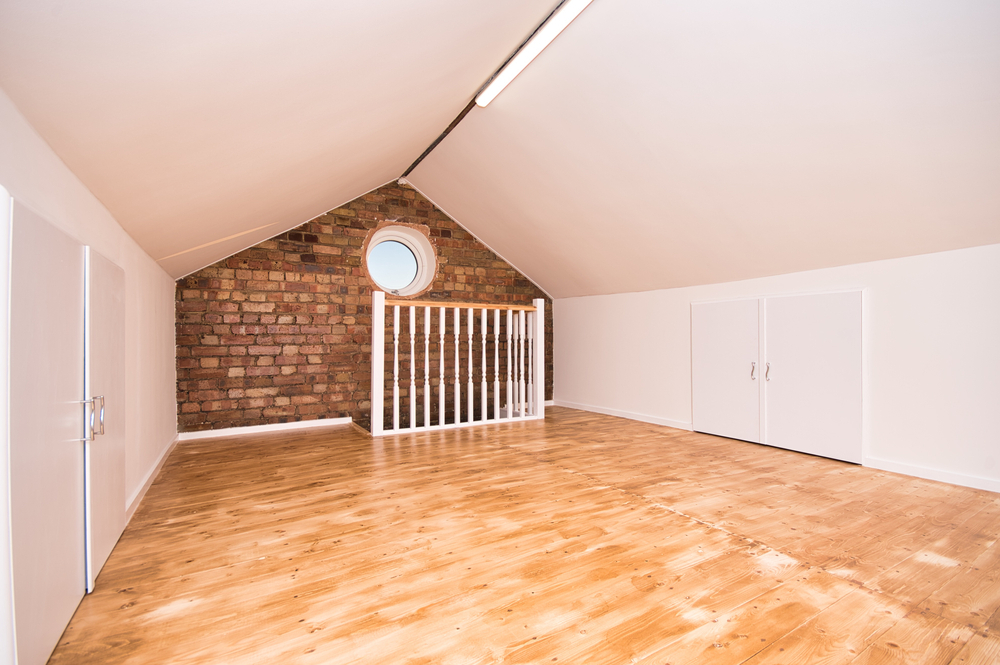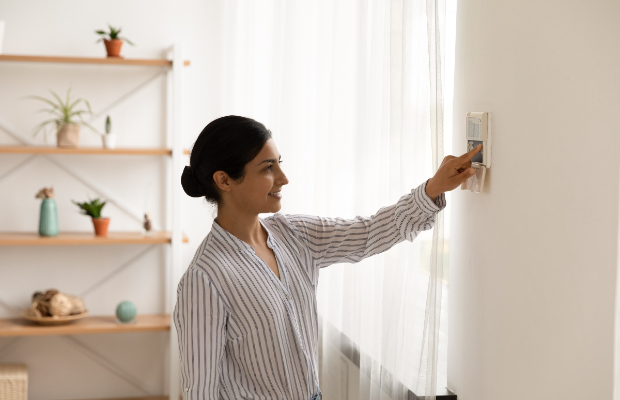A loft conversion can be a great way to add space to your existing home, add value and boost appeal to buyers – but it’s important to understand what’s involved and know if your property is suited to a conversion.
“Loft conversions were one of the top five projects in recent years (Dataloft),” says Ellis & Co Managing Director Toby Phillips.
“With so many different types, there’s a loft conversion to suit every home and every budget.”
This guide explains the different types of loft conversions and the key things you’ll need to consider before going ahead.
What are the different types of loft conversion?
Not all types of loft conversion will be suitable for your roof, so always seek professional advice.
There are four main types of loft conversion and each one has its own pros and cons and will vary in cost.

1. Roof light conversions
Roof light conversions are generally the simplest option as the work involved should cause the least disruption to your home.
A roof light conversion doesn’t involve any changes to the roof – it’s just a case of adding in skylight-style windows, boarding walls, adding a floor, and putting in a staircase from the floor below.
Roof light conversions are generally the cheapest loft conversion option but will only work if your loft space is large enough without the need for structural amendments.
Suitable for
- Most types of houses where the loft is large enough for a living space
Pros
- Most roof light conversions won’t require planning permission
- Roof light conversions are generally cheapest
- Less disruption and construction work required
Cons
- A roof light conversion won’t add extra space
- The existing space may not be large enough for additional rooms like an en-suite bathroom

2. Dormer loft conversions
A dormer loft conversion is when an additional structure is added to a sloped roof, protruding horizontally and vertically, often with a window.
Dormer conversions are hugely popular as they add a great amount of headroom and floor space in most cases.
There are also different types of dormer conversion, including L shaped dormers and full width dormers.
L shaped dormers see two dormers built, one on the side of the roof and another on the rear, which are then connected at a right-angle.
A full width dormer, meanwhile, is a dormer conversion that runs from one side of the property to the other.
Suitable for
- Almost any property with a sloping roof
Pros
- Dormers maximise headroom
- Windows or doors on dormer conversions can maximise natural light
Cons
- Dormers require structural work so can be more expensive and disruptive compared with roof light conversions
- Dormers aren’t always as attractive and other types of loft conversion.
3. Hip-to-gable conversions
A hip-to-gable conversion sees a property’s sloping side roof made vertical to create a gable wall.
This creates headroom where the sloped roof was previously, so hip-to-gable conversions are very popular.
Rear dormers can also be added to a hip-to-gable conversion, creating even more space and headroom, while detached homes with two sloping side roofs can accommodate a double hip-to-gable conversion.
Suitable for
- Detached or semi-detached houses with a sloping side roof
Pros
- Creates a lot of additional space
- Can look more aesthetically pleasing than a dormer
Cons
- Not suitable for mid-terraced homes
- Can look unbalanced on semi-detached homes where the neighbouring property’s hip roof is retained

4. Mansard loft conversions
Often the most expensive type of loft conversion, a mansard conversion changes the shape of an entire roof, making it almost vertical.
Mansard conversions can offer a large amount of space, making them popular for those looking to create several additional rooms.
Mansard conversions are often created with dormers to house windows, which increases the amount of indoor space even more.
L shaped mansard conversions add space to the rear of the property as well as the side, while a double mansard conversion is like adding another storey, with the conversion covering the full length and width of the roof.
Suitable for
- Most property types
Pros
- Creates the most space of all loft conversions
- Suitable for almost any property
Cons
- An almost vertical roof slope can look unnatural
- Mansard conversions can be expensive
How much does a loft conversion cost?
The cost of your loft conversion will vary depending on the type of conversion you choose and the complexity of the work involved, but on average you can expect to pay the following*:
|
Loft conversion type
|
Average cost
|
|
Roof light conversion
|
£27,500
|
|
Dormer
|
£45,000
|
|
Hip-to-gable
|
£55,000
|
|
Mansard
|
£57,500
|
* Average cost according to Checkatrade.com
What type of roof is best for a loft conversion?
A rafter roof is the best kind of roof for a loft conversion.
Rafter roofs is supported around the outside, meaning the space inside is hollow – ideal for a loft conversion.
Some roofs have additional support trusses that run through the loft space and these types of roofs aren’t as well suited to loft conversions.
What is the cheapest loft conversion?
Roof light loft conversions are generally the cheapest as they utilise the existing loft space without the need for structural changes.
Windows are added to the existing sloping roof, walls boarded, and a floor added alongside a staircase from the floor below, meaning roof light conversions also cause the least disruption of all loft renovation work.
Do I need planning permission for a loft conversion?
Most loft conversions don’t require planning permission, but you should always check with your local planning department first.
You shouldn’t require planning approval for your loft conversion if:
- It results in a space that is less than 40 cubic metres (terraced house) or 50 cubic metres (semi or detached house)
- It doesn’t extend further than the existing roof slope at the front of the house
- It does not extend higher than the highest part of the existing roof
- It is constructed with materials in keeping with the existing house
- It doesn’t have a veranda or balcony
- It has side-facing windows made with obscure glazing
- The property isn’t in a national park, Area of Outstanding Natural Beauty, or conservation area
Building regulations and loft conversions
All loft conversions need to comply with building regulations – even if they don’t require planning permission.
The specific building regulations you’ll need to comply with will depend on the type of loft conversion you’re planning, but will include:
Fire safety regulations
Including fire-resistant doors, smoke alarms and adequate escape routes via a staircase and windows.
Structural regulations
Including adequate support for the new living space and the existing or new roof.
Noise insulation
Between the new living space and the rooms below.
Plumbing and electrics
Any new bathrooms and living spaces will need to comply.
Loft conversions and Party Wall agreements
Loft conversions in semi-detached or terraced houses often require a Party Wall agreement.
Party Walls are walls that are shared between neighbouring properties or those within six metres, where damage to the wall could affect the other person’s property.
Under the Party Wall Act 1996, you’ll need a Party Wall agreement with your neighbour if you wish to carry out a loft conversion that could affect their property.
Firstly, you should serve your neighbours with a Party Wall notice at least two months before you plan to start work.
The notice should include:
- Your name and address and the address of the property where work will be carried out
- A description of your planned works, including drawings if available
- The date you plan to start work
Your neighbour should then either give their consent to the work in writing or refuse consent in writing.
If they fail to respond to your notice after 14 days, a surveyor will need to issue a Party Wall award for work to go ahead.
For more advice about how to add value to your home through renovation, book a free valuation today.








